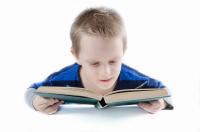Research on language and reading development in Arabic

Did you know that Arabic speaking kids all over the world first acquire a variety of Arabic that is only spoken and does not have any conventional written form? Yet, all Arabic books, including children’s storybooks are written in a different variety of the language called Standard Arabic. This language variety is learnt primarily at school and is remarkably different from the spoken variety in vocabulary and also in phonological, morphological and syntactic structure. It is estimated that only 20% of the words in the spoken lexicon of preschool children exist in an identical form in Standard Arabic. So, it is not surprising that Arabic speaking kids do not understand a story when it is read to them in Standard Arabic.
Prof. Elinor Saiegh-Haddad runs two research projects that study language and reading development in Arabic. The first study, with Dr. Lior Laks, is funded by the Israel Science Foundation and it examines Arabic native speaking children’s and adults ability to produce texts in Standard and Spoken Arabic in speaking and writing and investigates:
- the psycholinguistic characteristics of the languages as used by speakers in the two varieties
- the linguistic abilities (e.g., lexical, syntactic, etc.) of speakers in the two varieties
- the extent to which Standard Arabic language abilities may be predicted by skills in spoken Arabic
The second project is funded by the Ministry of Education (with Prof. Rachel Schiff) and it studies reading development in Standard Arabic by school children in grades 2, 4, 6, 8, and 10 and the extent to which oral language processing skills in Spoken Arabic can explain and predict reading development in Standard Arabic.
Last Updated Date : 15/12/2021



